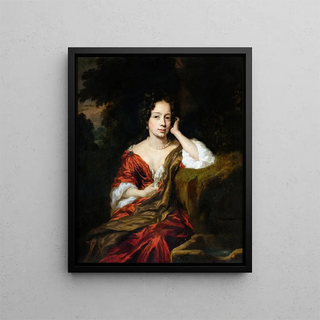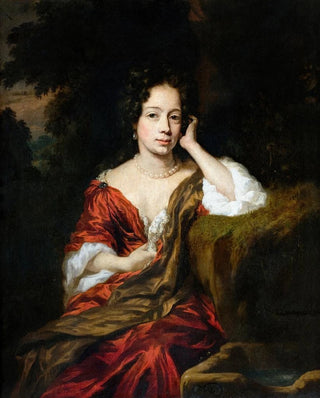Art print | Portrait of a woman - Nicolaes Maes Source: Reproduction | Portrait d'une femme - Nicolaes Maes


View from behind

Frame (optional)
Portrait of a Woman - Nicolaes Maes – Captivating Introduction
In the vast panorama of art history, certain works stand out for their ability to capture the very essence of humanity. The "Portrait of a Woman" by Nicolaes Maes, painted in the 17th century, is one of those creations that transcends time. This piece, emblematic of the Baroque movement, invites us to delve into a universe where light and shadow dance across the delicate features of a woman whose gaze seems to tell a story. Viewing this art print, one immediately feels a connection with the past—a silent dialogue between the artist and the viewer. This portrait is not merely a simple representation; it evokes emotions, thoughts, and an aesthetic that invites reflection.
Style and uniqueness of the work
Maes's style is characterized by an exceptional mastery of light and color, a fundamental element of the Baroque. In this portrait, light plays a central role, illuminating the woman's face with an almost ethereal softness. The subtle nuances of the skin, the texture of the clothing, and the delicate background contribute to creating an intimate atmosphere. The composition is carefully orchestrated, with each element placed with precision that demonstrates the artist's skill. The woman's gaze, both gentle and penetrating, seems to capture the soul of the viewer, establishing a connection that transcends centuries. This art print also stands out for its psychological approach; Maes does not merely depict a female figure, he offers us a window into her inner world, thus giving the work a rare depth.
The artist and his influence
Nicolaes Maes, born in Dordrecht in 1634, is often associated with the Dutch painting school of the 17th century, a period marked by unprecedented artistic flourishing. A pupil of Rembrandt, Maes mastered his master's techniques while developing a personal style unique to him. His work, rich in portraits and genre scenes, reflects a meticulous observation of daily life and human emotions. Maes's influence on his contemporaries and future generations is undeniable; he captured the essence of the society of his time, making

Matte finish

View from behind

Frame (optional)
Portrait of a Woman - Nicolaes Maes – Captivating Introduction
In the vast panorama of art history, certain works stand out for their ability to capture the very essence of humanity. The "Portrait of a Woman" by Nicolaes Maes, painted in the 17th century, is one of those creations that transcends time. This piece, emblematic of the Baroque movement, invites us to delve into a universe where light and shadow dance across the delicate features of a woman whose gaze seems to tell a story. Viewing this art print, one immediately feels a connection with the past—a silent dialogue between the artist and the viewer. This portrait is not merely a simple representation; it evokes emotions, thoughts, and an aesthetic that invites reflection.
Style and uniqueness of the work
Maes's style is characterized by an exceptional mastery of light and color, a fundamental element of the Baroque. In this portrait, light plays a central role, illuminating the woman's face with an almost ethereal softness. The subtle nuances of the skin, the texture of the clothing, and the delicate background contribute to creating an intimate atmosphere. The composition is carefully orchestrated, with each element placed with precision that demonstrates the artist's skill. The woman's gaze, both gentle and penetrating, seems to capture the soul of the viewer, establishing a connection that transcends centuries. This art print also stands out for its psychological approach; Maes does not merely depict a female figure, he offers us a window into her inner world, thus giving the work a rare depth.
The artist and his influence
Nicolaes Maes, born in Dordrecht in 1634, is often associated with the Dutch painting school of the 17th century, a period marked by unprecedented artistic flourishing. A pupil of Rembrandt, Maes mastered his master's techniques while developing a personal style unique to him. His work, rich in portraits and genre scenes, reflects a meticulous observation of daily life and human emotions. Maes's influence on his contemporaries and future generations is undeniable; he captured the essence of the society of his time, making






